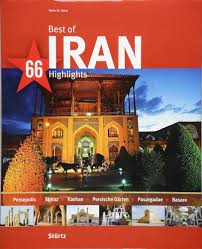Understanding IRNA: Iran’s National News Agency

Introduction
IRNA, short for Islamic Republic News Agency, serves as Iran’s national and official news agency. Established in 1934, it plays a critical role in disseminating news and information both within Iran and globally. As the main agency of the Iranian government, IRNA’s reporting often reflects the official stance and viewpoints of the Iranian authorities. Understanding IRNA provides key insights into Iran’s media landscape and its influence on public perception.
IRNA’s Role and Functionality
IRNA operates under the auspices of the Iranian government, ensuring that the news it produces is in line with national interests and narratives. With a network of correspondents both domestically and internationally, IRNA covers a wide range of categories including political, economic, cultural, and sports news. Its news services include text, audio, and video formats, allowing for comprehensive news distribution.
Despite being a state-run agency, IRNA is significant in shaping not just domestic narratives but also presenting Iran’s perspectives on various international issues. This is particularly important in a geopolitical context where perceptions of Iran can be heavily skewed by bias and misinformation from other media outlets.
Recent Developments
In recent months, IRNA has focused on several significant developments. Notably, it covered the ongoing negotiations surrounding Iran’s nuclear program and the subsequent geopolitical ramifications. Additionally, IRNA has reported on public sentiment regarding domestic issues, including economic challenges and public protests. It serves as a barometer of social issues in Iran, often highlighting government responses to public grievances.
Challenges and Criticism
Given its status as a government-run agency, IRNA faces criticism regarding freedom of the press and media independence. Many in the international community view its reporting as biased due to its close ties with the Iranian government. This critique brings into question the role of state media in a democratic society and raises concerns regarding censorship and lack of diverse viewpoints in the Iranian media landscape.
Conclusion
Understanding IRNA is essential for anyone studying Middle Eastern politics, journalism, or international relations. As the primary source of news from Iran, it offers invaluable insights into the Iranian viewpoint on various issues. Nonetheless, readers must approach IRNA’s content with a critical perspective, recognizing potential biases inherent in state-run media. Looking ahead, the evolution of IRNA may be influenced by changing public attitudes towards freedom of expression and greater calls for transparency in journalism. The agency’s adaptability will be a telling indicator of the media landscape in Iran as it continues to navigate its own historical and political context.









